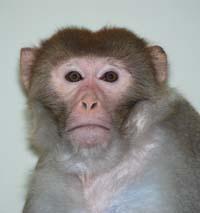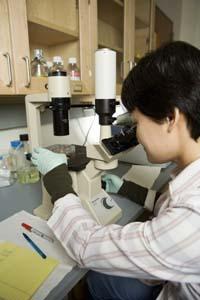Competence in stem cell research

Mitalipoven has used fibroblasts of an adult macaque, i.e., connective tissue cells. The nucleus of the fibroblast has been introduced into an osculum without a nucleus, which means that the osculum contains its genetic information. Subsequently, they have led to the beginning of embryonic development until the blastocyst phase. In fact, in this first phase, embryonic cells are not specialized, so they have the ability to become any type of cell. That is, they are stem cells.
In other animals, the researchers had already achieved it before, but in the primates they could not advance. Mitalipov, however, has made some changes in the passage of the introduction of the adult cell nucleus into the egg and seems to have invented it. They expect the method to serve also in humans.
The problem is that ethically some find it unacceptable to create an embryo and then destroy it. And the other research they have published now does not have that problem, since they have achieved stem cells by another way. In addition, they have done so with human cells.
By way of reprogramming
In fact, Cell has published the work of the Yamanaka team of the University of Kyoto, and Science, of the Thomson team of the University of Wisconsin-Madison (USA), have obtained stem cells reprogramming mature cells. In particular, differentiated cells have become cells similar to those of the mother, introducing some essential genes in the development of the embryo.
Yamanaka released this technique last year and tested it on the mouse. The big drawback was that he had to introduce four genes into the cells of the mice and for this purpose he used a retrovirus. The use of virus is not safe and one of the factors introduced detected that it generated tumors. However, it has used the same technique with human cells. He has left the surface cells of a 36-year-old woman and a 69-year-old man, and has managed to convert the stem cells obtained in cardiac cells and neurons, but with the same risks they had in the mouse.

Thomson's team is part of the fetal cells of a newborn baby and the cells of the foreskin. And to reprogram them, to return to the stem cell, they have introduced four genes, but not the same as those of Kyoto: two were equal and the other two were not. In this way it is believed that they have not included the causing factor of the tumor, but nevertheless they have introduced the genes through a virus.
In addition, Americans have recognized that at least 14 genes are involved in reprogramming, but this time they have been sufficient. However, they do not have their function clear. What do the unused do? What if they are missing?
They still have many questions to answer, but, stimulated by the competitive climate, the stages are being overcome. Meanwhile, those around you watch for there to be no doping (fraud) and wait anxiously when the time comes to get the txapela.
Buletina
Bidali zure helbide elektronikoa eta jaso asteroko buletina zure sarrera-ontzian











